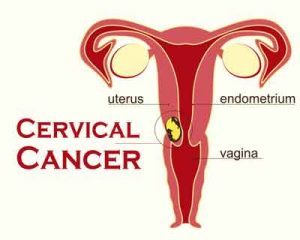- Home
- Editorial
- News
- Practice Guidelines
- Anesthesiology Guidelines
- Cancer Guidelines
- Cardiac Sciences Guidelines
- Critical Care Guidelines
- Dentistry Guidelines
- Dermatology Guidelines
- Diabetes and Endo Guidelines
- Diagnostics Guidelines
- ENT Guidelines
- Featured Practice Guidelines
- Gastroenterology Guidelines
- Geriatrics Guidelines
- Medicine Guidelines
- Nephrology Guidelines
- Neurosciences Guidelines
- Obs and Gynae Guidelines
- Ophthalmology Guidelines
- Orthopaedics Guidelines
- Paediatrics Guidelines
- Psychiatry Guidelines
- Pulmonology Guidelines
- Radiology Guidelines
- Surgery Guidelines
- Urology Guidelines
Most cervical intra-epithelial neoplasia lesions regress spontaneously: BMJ

An international team of researchers, led by Maria Kyrgiou at Imperial College London conducted a study to estimate rates of regression, persistence, and progression of untreated cervical intra-epithelial neoplasia grade 2 (CIN grade 2) lesions and concluded that only regular monitoring (“active surveillance”) rather than immediate treatment is justified for moderate cervical lesions as many of such lesions regress spontaneously, particularly in younger women.The review of the evidence has been published by The BMJ today.
CIN is divided into grades 1, 2 or 3 based on the severity of the precancerous changes, but CIN is not cervical cancer. It has the potential to progress to cancer, but may also return to normal (regress) or remain unchanged.
A diagnosis of CIN2 is currently the cut-off point for treatment. But some studies have suggested that CIN2 lesions often regress completely without treatment and should be actively monitored instead, especially in younger women because treatment can be harmful for future pregnancies.
The team of researchers analysed results from 36 studies involving 3,160 women with a laboratory confirmed diagnosis of CIN2 who were actively monitored for at least three months.Differences in study design and quality were taken into account, and rates of regression, persistence, and progression were measured at 3, 6, 12, 24, 36, and 60 months.
After two years, half (50%) of the lesions had regressed spontaneously, one third (32%) persisted, and just under one in five (18%) progressed to CIN3 or worse. In women aged under 30, the rate of regression was even higher (60%), persistence was 23%, and progression was 11%.
Based on these estimates, the researchers explain that in 1000 women aged under 30 with a diagnosis of CIN2, 600 will experience regression, 230 will remain unchanged, and 110 will progress within two years of active surveillance.
Only 15 cases of cancer (0.5%) were reported, most in women aged more than 30. Compliance with surveillance was high - around 90% over two years - and similar patterns emerged after further analyses to test the strength of the results.
However, the researchers point to some limitations, such as the substantial differences between studies and possible misclassification of lesions. Although they were able to account for some of these shortcomings, they cannot rule out the possibility that they may have influenced the results. As such, they say their findings “should be interpreted with caution.”
They conclude: “Most CIN2 lesions, particularly in women aged less than 30, regress spontaneously. Active surveillance, rather than immediate intervention, is therefore justified, especially among young women who are likely to adhere to monitoring.”
So what does this review mean for women trying to decide which management option is best after a CIN2 diagnosis, asks Professor Maggie Cruickshank at the University of Aberdeen, in a linked editorial?
Knowing that the chance of regression is 50-60%, “still means taking a gamble that surveillance is simply delaying treatment and even a small risk of cancer (0.5% in this study) may still be unacceptable to some,” she writes. Other important considerations include the effects of treatment, the inconvenience of regular clinic visits, and the possibility of pregnancy complications.
Knowledge of the rates of regression from CIN2 are reassuring, she says, “but they must be presented in a meaningful way alongside clear information about the effects of both surveillance and treatment, so women can make fully informed choices.”

Disclaimer: This site is primarily intended for healthcare professionals. Any content/information on this website does not replace the advice of medical and/or health professionals and should not be construed as medical/diagnostic advice/endorsement or prescription. Use of this site is subject to our terms of use, privacy policy, advertisement policy. © 2020 Minerva Medical Treatment Pvt Ltd